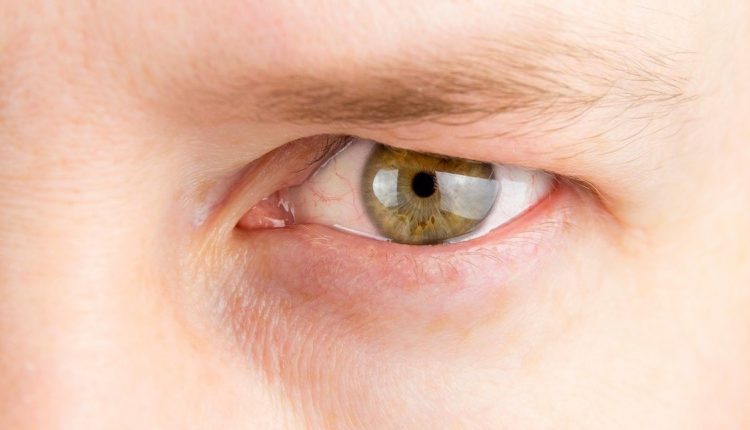
Lagophthalmos: causes, symptoms, diagnosis and treatment
Lagophthalmos is a condition that prevents the complete closure of one or both eyelids. It is a problem that can be linked to more serious conditions such as facial nerve palsy, congenital malformations or injury to the orbicularis orbicularis muscle of the eye
Lagophthalmos is also common in individuals with retracting eyelid scars caused by surgery, such as blepharoplasty, or physical trauma.
Lagophthalmos: what is it?
Lagophthalmos is a condition characterised by the inability to close the eyelid rima correctly.
The eyelids perform a protective function for the eyes, especially during sleep.
During the day, their movement favours an even distribution of tears over the entire surface, ensuring the hydration of the eyes and the escape of any foreign bodies.
Among the first consequences of Lagophthalmos is dry eye, a condition that causes irritation and discomfort, exposing the eyes to dangerous infections.
In fact, incomplete closure of the eyelid rhyme leaves the cornea and conjunctiva exposed to the action of external agents, favouring corneal abrasions, keratitis and conjunctivitis.
In more severe forms of lagophthalmos, the damaged cornea shows neovascularisation and becomes opaque and may be predisposed to ulcer formation or infectious processes.
Lagophthalmos: the causes
Lagophthalmos is usually caused by a paralysis of the facial nerve, which is responsible for regulating the functioning of the eyelid muscles.
This condition can also develop in conjunction with other diseases, such as stroke.
Other causes include physical trauma, exophthalmos, i.e. protrusion of the eyeball from the orbit, and ectropion, i.e. rotation of the eyelid outwards.
Lagophthalmos is common in comatose patients with decreased orbicularis muscle tone and in persons suffering from severe skin disorders, including ichthyosis.
Sometimes lagophthalmos is a consequence of surgery.
One example is blepharoplasty, a cosmetic surgery procedure that involves removing excess skin at the eyelid level to reduce the signs of ageing.
One of the consequences of the surgery can be an incorrect alignment of the lower and upper rhyme.
More rarely, lagophthalmos affects those suffering from thyroid disorders or as a result of surgery to remove an acoustic neurinoma, a form of tumour.
Studies have shown that the condition occurs more frequently in individuals who use contact lenses, especially new ones.
Lagophthalmos: the symptoms
Lagophthalmos presents rather obvious symptoms ranging from dryness of the eyes to keratitis, to opacification of the cornea and more or less severe inflammation.
Rather than an actual disease, in medicine lagophthalmos is regarded as a consequence of other diseases.
The most common of these are herpes simplex and herpes zoster of the eye, stroke, ichthyosis, acoustic neurinoma removal surgery and Down syndrome.
Diagnosis
Lagophthalmos is diagnosed during an eye examination.
Usually the ophthalmologist performs a slit-lamp test, inspecting the eyeball.
The patient is then asked to keep their eyes closed to measure the space between the eyelids.
Treatment
After the diagnosis of lagophthalmos, treatment is possible.
The treatments that can be followed are different and vary depending on the severity of the problem.
In less severe cases, it is sufficient to apply artificial tears to keep the cornea hydrated.
The most commonly used surgical approach involves applying some plaques placed on the upper eyelid.
The force of gravity tends to push down the area, reducing the space between the rims.
If the lagophthalmos does not improve, gold plates can be implanted in the inner eyelid area by means of surgery.
The operation lasts about two hours and is performed under local anaesthesia.
However, it has some contraindications, in particular the possible occurrence of corneal astigmatism.
Read Also
Emergency Live Even More…Live: Download The New Free App Of Your Newspaper For IOS And Android
Optic Nerve Injury: Symptoms, Diagnosis And Treatment Of Optic Neuritis
Low Vision: What Is It And When To Take Action?
Ocular Herpes: Definition, Causes, Symptoms, Diagnosis And Treatment
Eye Diseases: The Macular Hole
What Is Ocular Pterygium And When Surgery Is Necessary
Vitreous Detachment: What It Is, What Consequences It Has
Macular Degeneration: What It Is, Symptoms, Causes, Treatment
Conjunctivitis: What It Is, Symptoms And Treatment
How To Cure Allergic Conjunctivitis And Reduce Clinical Signs: The Tacrolimus Study
Bacterial Conjunctivitis: How To Manage This Very Contagious Disease
Allergic Conjunctivitis: An Overview Of This Eye Infection
Keratoconjunctivitis: Symptoms, Diagnosis And Treatment Of This Inflammation Of The Eye
Glaucoma: What Is True And What Is False?
Eye Health: Prevent Conjunctivitis, Blepharitis, Chalazions And Allergies With Eye Wipes
What Is Ocular Tonometry And When Should It Be Done?
Dry Eye Syndrome: How To Protect Your Eyes From PC Exposure
Autoimmune Diseases: The Sand In The Eyes Of Sjögren’s Syndrome
Dry Eye Syndrome: Symptoms, Causes And Remedies
How To Prevent Dry Eyes During Winter: Tips
Blepharitis: The Inflammation Of The Eyelids
Blepharitis: What Is It And What Are The Most Common Symptoms?
Stye, An Eye Inflammation That Affects Young And Old Alike
Diplopia: Forms, Causes And Treatment
Exophthalmos: Definition, Symptoms, Causes And Treatment
Eye Diseases, What Is Entropion
Hemianopsia: What It Is, Disease, Symptoms, Treatment
Diseases Of The Ocular Conjunctiva: What Are Pinguecula And Pterygium And How To Treat Them



